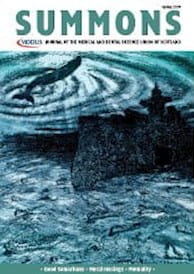IN THESE CURRENT grim economic times, redundancy, as a weekly phenomenon, is once again on the news agenda. For some who have come recently into the labour market, this may seem a new threat. For others who remember the 1980s, the current headlines will seem eerily familiar. The fact that these older workers will apparently be more vulnerable to dismissal and will find it more difficult to find other employment adds a frisson to the memory.
A number of recent surveys indicate that redundancies are set to increase over the next few months. In this climate, medical and dental practices would be wise to familiarise themselves with the potential legal pitfalls that can arise when making staff redundant.
In the 1980s, the traditional criterion for deciding who should be selected for redundancy when an organisation was cutting back on staff was ‘Last in, first out’ (LIFO) – meaning that length of service was the yardstick used to select those with least service for dismissal and to protect the employment of those with most service.
However, times changed. Employers increasingly found that keeping long-serving staff at the expense of (usually younger) more recently recruited employees might put an organisation at a disadvantage when competing in a fast-changing world. So they began to introduce more sophisticated systems of selection for redundancy aimed at keeping a workforce that was, in the employers’ view, best-equipped to adapt to new competitive market conditions. Selection criteria such as skill levels, experience of a variety of roles, disciplinary, performance and attendance records began to be used more often – aimed at choosing ‘who should stay’ rather than ‘who should go’.
The legislation that apparently sounded the death-knell of LIFO was the Age Discrimination Regulations in 2006. Employers who now operate a selection method favouring older workers over younger workers run the risk of an indirect age discrimination claim from junior staff being made redundant. Clearly, a more ‘subtle’ approach to redundancy selection is now required. A recent court case decided that length of service could be used as a ‘tie-breaker’ only when other criteria have sifted the numbers down to a smaller group.
But age is not the only discrimination pitfall for organisations cutting back on staff. Those employers who use absence records as the basis for selection for redundancy need to ensure that such a policy does not discriminate against disabled workers. It may be that disabled employees who have had more sickness absence than able-bodied colleagues might reasonably argue that absences attributable to their disability should be excluded from any ‘totting up’ system for redundancy selection.
It is tempting to use ‘performance in the job’ as a selection criterion. However, many employers have come a cropper when using this criterion (and that old chestnut, ‘attitude’) as a selection tool when they have no proper objective historical record of comparative performance or behaviour – such as a robust and fairly-operated appraisal scheme. Relying on the opinion of the line manager or partner on the person’s performance or attitude is a recipe for subjectivity and the appearance of prejudice and favouritism.
Remember: if a redundant employee suggests that their gender, race, age, disability, sexual orientation or religion was an explanation for their selection for dismissal, the burden of proof lies with the employer to prove otherwise in an Employment Tribunal. Those who have relied on subjective (rather than defensible, objective) selection criteria risk facing a successful discrimination (and, possibly, unfair dismissal) decision against them – with potentially unlimited compensation to follow.
A fair and objective selection process may not be victim-free. But at least the pain and cost for the individual and the practice should not drag on into the courts for months. Planning for such contingencies needs careful thought (and probably some expert advice) and may set some unnecessary alarm bells ringing amongst the staff, if poorly handled. But having a defensible, up-to-date and practically effective redundancy policy should be an urgent priority for medical and dental practices – even if redundancies are still only a theoretical possibility.
- Ian Watson, Training Services Manager, Law At Work. Law At Work is MDDUS preferred supplier of employment law and health and safety services. For more information and contact details please visit www.lawatwork.co.uk
This page was correct at the time of publication. Any guidance is intended as general guidance for members only. If you are a member and need specific advice relating to your own circumstances, please contact one of our advisers.
Read more from this issue of Insight

Save this article
Save this article to a list of favourite articles which members can access in their account.
Save to library